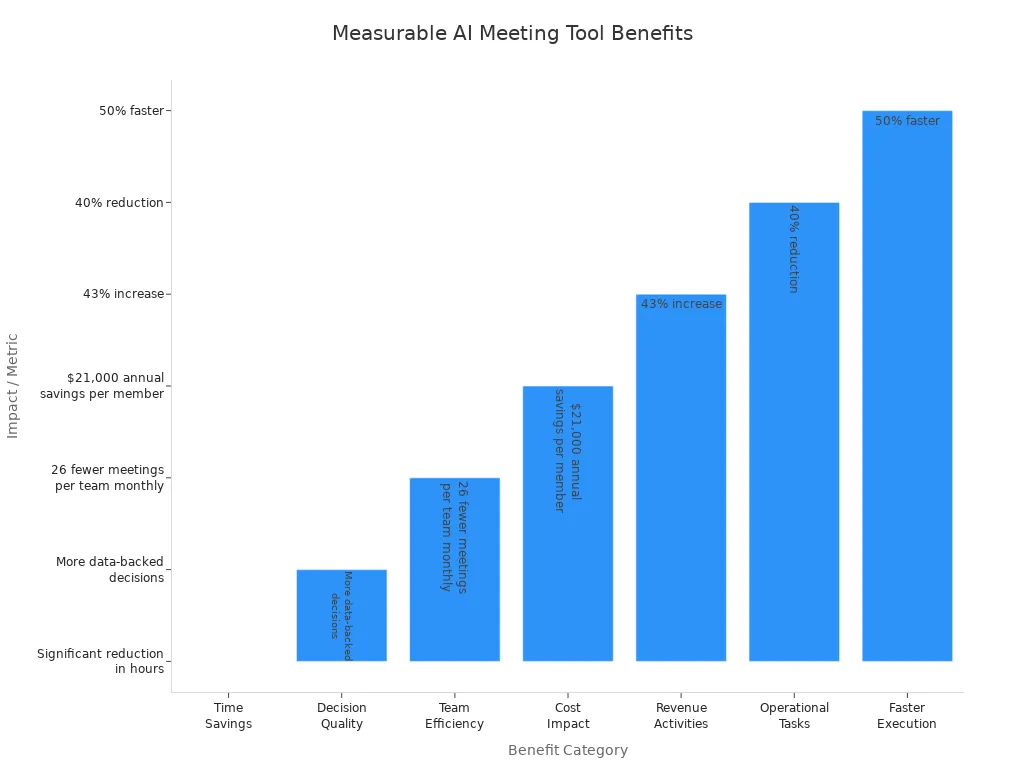B2B SaaS Micro Apps Ideas in 2025

AI-powered vertical micro app for healthcare: Helps clinics and hospitals manage patient records.
Hyper-automation micro-saas for logistics: Makes shipment tracking easier for supply chain managers.
Document AI micro app for legal teams: Reviews contracts automatically for law firms.
Micro CRM micro-saas for freelancers: Makes it easier for freelancers to manage clients.
Vendor risk dashboard micro app: Checks if procurement teams follow rules.
Onboarding checklist micro-saas: Helps HR set up new employees.
Invoice reconciliation micro-saas: Matches payments for finance teams.
B2B micro-saas is important in 2025. Companies use over 100 saas tools each. More people use micro apps because they fit special needs. Micro-saas startups make good profits and keep customers. AI-driven saas and micro app platforms grow fast in b2b areas.
Key Takeaways
Micro apps fix one clear business problem with easy tools. Small teams can make and change them fast.
B2B companies use micro-saas apps to save time. They also make things less hard and help users by meeting special needs.
No-code and low-code platforms help teams build and test micro apps fast. This helps businesses grow with less money and less risk.
Picking a small market and talking to real users helps find good micro-saas ideas. These ideas fix real problems and keep customers happy.
Subscription pricing and quick feedback help micro-saas businesses last. They also help these businesses change and give value all the time.
Micro App Definition
What Is a Micro App?
A micro app in B2B SaaS is a small software tool. It solves one business problem very well. Micro apps are not like big SaaS tools. They help a small group, like a CRM for small clinics or a contract tool for lawyers. Micro-saas apps do not need many people to build them. One person or a small team can make them. They are made quickly and can be changed for each user. Most micro-saas apps use subscriptions. This helps them last even with few users. StoreMapper is an example. It lets stores add a map to their website without coding. This shows how micro-saas apps solve special problems fast.
Micro-saas apps are simple, easy to use, and do one thing well. Big SaaS tools may not be as simple or focused.
Key Features of Micro Apps
Micro-saas apps are different from big SaaS tools. The table below shows what makes micro-saas special:
Feature | Micro Apps (Micro-SaaS) | Traditional SaaS Applications |
|---|---|---|
Scale and Scope | Niche-focused, specialized solutions | Broad markets, comprehensive features |
Investment | Minimal, often by individuals or small teams | Significant, large teams |
Growth Ambitions | Sustainability and profitability | Rapid scaling and market leadership |
Team Size | Small, flexible teams or individuals | Large, multi-department teams |
Customer Relationship | Personalized, direct feedback | Formal, structured interactions |
Development Speed | Rapid, using no-code tools | Longer cycles, more resources |
Lifespan | Often short-lived or disposable | Long-term, continuous maintenance |
Functionality | Laser-focused, minimal footprint | Multi-featured, full-fledged solutions |
Device Responsiveness | Responsive across devices | May require separate versions |
Notifications | Notification-driven interactions | Less emphasis on notifications |
Micro-saas apps do one job, like approving expenses or making checklists. They use no-code tools to build and update fast. These apps work on computers, tablets, and phones. Micro-saas apps use notifications to tell users what is new. This means users do not have to check data by themselves. Many micro-saas apps are made for short projects or events. They can be built fast with no-code or low-code tools.
B2B SaaS Trends 2025

Why B2B SaaS Micro Apps Matter
B2B SaaS micro-saas apps are changing how companies work in 2025. Businesses want tools that fix one problem really well. Micro-saas apps do this job. Many companies use micro-saas to stop wasting time switching between apps. They want tools that work together and help people do their jobs faster. Small businesses lose customers fast if tools are hard to use. Micro-saas apps keep users happy and help them stay longer. Good API links let micro-saas fit into other platforms easily. Top leaders now want AI-powered b2b saas apps that work right away. More buyers care about how they use the app, not just what it does. Micro-saas apps give simple, personal tools that are easy for everyone.
Note: No-code and low-code platforms help small teams make b2b saas micro-saas apps fast. This helps businesses grow quickly.
Market Growth and Niche Opportunities
The b2b saas market is growing very fast. It may go from $232 billion to $1.13 trillion by 2032. Micro-saas apps are a big part of this growth. Companies now want AI-powered b2b saas apps. Most tech budgets go to smart tools. Micro-saas platforms focus on special markets like healthcare, retail, and construction. These apps solve problems for each industry and help with rules. Platform-as-a-Service models are growing by 23.3% each year. This helps companies grow with custom micro-saas add-ons. Many companies want to use fewer tools. About 41% want b2b saas apps that work together to save money and time. As internet gets better in Asia, Africa, and South America, more people use b2b saas micro-saas apps.
Trend | Impact on B2B SaaS Micro-SaaS Applications |
|---|---|
AI and Machine Learning | Smarter, personalized, and autonomous applications |
No-Code/Low-Code Platforms | Faster, easier development for micro-saas |
Vertical SaaS Expansion | Solutions for niche markets and industries |
App Consolidation | Integrated applications reduce complexity |
Global Market Growth | New opportunities in emerging regions |
Identifying Micro-SaaS Ideas
Criteria for High-Potential Micro-SaaS
Finding good micro-saas ideas in b2b saas needs a plan. Teams should look for problems by watching users and asking for feedback. They should also check what other companies do. Here are some steps to help find and test ideas:
Talk to possible customers with interviews and surveys. Try to sell early to see if people want the product.
Use a Lean Business Model Canvas to plan the product. Focus on who will use it, what it does, and how it makes money.
Check Customer Acquisition Cost and Lifetime Value. Make sure the Lifetime Value is at least three times the cost.
Try out marketing with small ads or posts in b2b groups. This helps see if people are interested.
Solve one big business problem with a simple product. Make sure it works with tools people already use.
Build a first version with no-code micro saas platforms. Change it based on what users say.
Solving one business problem helps micro-saas brands get noticed. This way, costs are lower and teams can work faster. No-code micro saas tools help teams build and test quickly. By picking a small market, micro saas apps give a better experience and keep more customers.
Niche Selection for B2B
Picking the right b2b saas niche is very important for micro-saas. Teams should find out what problems people have in each industry. They should ask target users for feedback. Teams can make micro saas apps that work alone or add to other saas products. No-code micro saas platforms like Bubble or AppSheet help launch first versions fast.
Industry | |
|---|---|
Healthcare | Make work easier, help patients, and follow rules |
Finance | Help with planning, billing, and payments |
Marketing | Run campaigns, manage CRM, and social media |
Human Resources | Make payroll, hiring, and employee tasks easier |
E-commerce | Run stores, track items, and fill orders |
Project Management | Track tasks, work together, and boost productivity |
Cybersecurity | Find threats, protect data, and keep networks safe |
Data Analytics | Show data, give business info, and predict trends |
Teams should use no-code micro saas tools to test prices and support. They should improve the product with feedback and watch market changes. Micro saas apps that fix clear problems, use data automation, and help automate work will grow the most.
B2B Micro App Ideas
Compliance Tracker for SMBs
Small and medium businesses have more rules to follow now. These rules come from things like HIPAA, GDPR, and SOC2. Many SMBs do not have enough people or money to handle this. The paperwork is hard and costs a lot. A compliance tracker micro-saas gives them a simple dashboard. It helps them watch their progress and keep records. This micro app has templates and easy ways to check risks. It also gives help in different languages. The app checks rules and makes reports by itself. This saves time and work during audits. SMB leaders can see how well they follow rules. They can also see their security and make plans. Tools like this help companies stop problems before they happen. They can avoid big mistakes and failed audits.
A compliance tracker micro-saas lets SMBs handle rules well. They can do this even if they have little money or tech skills.
Key benefits include:
Always watching and keeping records
Checks risks and makes reports by itself
Compare with other companies
Charts and scorecards for planning
AI Meeting Summary Tool
B2B teams spend lots of time in meetings. They also spend time writing notes. An AI meeting summary micro-saas changes this. It writes down what people say in meetings. It makes short notes and shows what needs to be done. The tool uses AI chat to answer questions. It also helps make workflow templates. Teams save time and make better choices. They get more work done.
Benefit Category | Measurable Impact / Description |
|---|---|
Time Savings | Teams spend less time on notes and meetings |
Decision Quality | More choices are made using data |
Team Efficiency | Teams have 26 fewer meetings each month |
Cost Impact | Each team member saves $21,000 a year |
Teams do more work that brings in money. They spend less time on daily tasks. They move from ideas to action much faster. The AI meeting summary micro-saas helps teams work together. It also lowers the amount of extra work.

Micro CRM for Freelancers
Freelancers need help to handle clients and projects. A micro CRM micro-saas for freelancers puts all client info in one place. It keeps track of tasks and sends messages. This tool works on phones and computers. It helps with project tracking, sending bills, and tracking time. Freelancers can see deadlines and send reminders. They can also check payments. The tool works with email and other apps. This makes work easier.
Key features valued by freelancers:
Send bills and check payments
Organize tasks and set reminders
Get new leads and send emails
Work with others and see reports
The freelance market is growing fast. The personal CRM market will be worth a lot soon. Freelancers want tools that are cheap and easy to use. They also want tools that help them work from anywhere.
Vendor Risk Dashboard
B2B companies have trouble with vendor risks. Problems include bad communication and supply chain issues. There are also threats to data and safety. A vendor risk dashboard micro-saas puts all risk info in one place. It gives alerts right away and helps with rules. The tool lets people have different access levels. It keeps data safe and works with other systems. Alerts help managers act fast when there is a problem.
Key challenges addressed:
Risks in the supply chain and growing the business
Data leaks and breaking rules
The vendor risk dashboard micro-saas helps find and fix risks faster. It keeps data good and helps train workers. Companies can check how safe their vendors are. They get clear info, watch risks all the time, and act before problems get big.
Onboarding Checklist App
Good onboarding helps new workers do better and stay longer. An onboarding checklist micro-saas helps HR teams set up steps for new hires. The tool makes lists for each department. It sets goals and gives feedback. Companies with good onboarding see workers do better.
New hires often feel lost or stressed. Micro-saas tools help by giving tips and easy steps. They let people sign in with social accounts. The tool changes steps based on each person’s job. This makes onboarding faster and easier.
Pain Point | Description | UX Design Solutions |
|---|---|---|
Too many things confuse new users | Show steps slowly, give help, make it clear | |
Hard to Connect | Data is split and work is messy | One dashboard, design for easy work |
Afraid of hard tools or losing jobs | Custom onboarding, teach and support |
Invoice Reconciliation Service
Doing invoices by hand is slow and mistakes happen. B2B finance teams need help to match invoices and find errors. A micro-saas invoice reconciliation service uses OCR and AI. It matches documents, finds problems, and shows payment status right away. The tool makes work faster and lets teams do more important jobs.
Key benefits:
Finds problems fast
Works with accounting systems
Shows payment updates right away
Helps manage money better
As companies get more invoices, they need automation. Micro-saas tools help teams work faster and make fewer mistakes. They also help automate more finance work.
More companies want automation, AI, and special tools. Micro-saas in b2b saas helps solve clear problems. These tools help teams work better and help companies grow.
Launching a Micro SaaS Business

MVP Development Steps
Starting a micro-saas business needs a good plan. Teams should follow steps to make a strong product. First, talk to real users and check the market to see if the problem is real. Next, pick one main use for the micro-saas product. Write down the problem and what makes your product special before you build. List the main features that fix the biggest problems for customers. Sort features into must-have, should-have, or nice-to-have groups. Use team tools to draw the user’s path and help with no-code micro saas building. Make simple drawings and early models to test ideas. Keep the product easy to use and do not add too much. Launch the MVP with only the most important parts, get feedback, and make changes. No-code platforms help teams build and plan features faster.
No-code micro saas tools help teams work quickly and save money. Feedback from users early on helps shape the product and makes success more likely in the saas business.
Pricing and Monetization
Picking the best way to price your micro-saas is very important. The table below shows common ways to price b2b saas apps:
Pricing Model | Description | Pros | Cons | Example(s) |
|---|---|---|---|---|
Different plans with more features cost more | Fits many needs, keeps users longer | Can be confusing for some customers | Hootsuite, Mailtrap | |
Per-user pricing | Pay for each user | Grows with use, easy to understand | Sharing accounts can lower money made | Slack, Asana |
Free basic version, pay for extras | Gets more people to try, easy to start | Some free users may never pay | Dropbox | |
Flat-rate pricing | One price for everything | Simple and clear | May not work for every customer | N/A |
Usage-based pricing | Pay for what you use | Flexible, matches cost to use | Money made can change a lot | N/A |
Micro-saas teams use no-code tools to try out different prices. Using price tricks like charm pricing can help sell more. Most micro saas apps do well with subscriptions.
Go-to-Market for B2B SaaS
A good go-to-market plan helps micro-saas reach customers fast. Teams can use these ideas in b2b saas app building:
Test the idea early with waitlists and special offers.
Find the best customer group and aim marketing at them.
Use account-based marketing to reach top customers.
Give free tools or gifts to get new leads.
Work with small influencers in your market.
Share clear messages and show why your product is good.
Join groups and hold events to build trust.
Reach out to people directly and ask for referrals.
Change the product and marketing when customers give feedback.
No-code micro saas and no-code platforms make it easy to launch and change the product. Getting customers early helps the business grow and makes the saas business stand out.
Micro-saas can help businesses grow and keep customers. People who start these should fix real problems. They should use no-code tools to build MVPs fast. It is important to check ideas with real customer feedback. Micro saas works best when it solves a clear need. Teams should make flexible micro saas products. Using subscriptions helps the business last longer. People who want help can join groups like SaaStr, Indie Hackers, or Micro SaaS HQ. These groups give advice, let you meet others, and share helpful tools.
Community Name | Key Offerings | Advantage |
|---|---|---|
SaaStr | Meet people, get advice, and go to events | Learn about b2b saas and make connections |
Indie Hackers | Talk in forums, read stories, get support | Help for solo founders and micro-saas ideas |
Find tools, see trends, join monthly calls | Get tools and tips for micro saas growth |
FAQ
What makes micro-saas different from traditional saas applications?
Micro-saas solves one business problem for a small group. Traditional saas helps many people with lots of features. Micro-saas uses no-code tools to build apps fast. It listens to customers and changes quickly. This saves money and lets teams update products faster.
How can a b2b company validate a micro app idea before launch?
A b2b company can talk to possible users and show them a simple version. They test the app with a small group first. Early feedback helps make the app better. No-code micro saas tools help build and test faster. This lowers risk before spending more money.
Why do subscription-based service models work well for micro saas solutions?
Subscription models give steady money each month. They help customers plan their spending. Micro saas often helps with daily work or business tasks. This model lets teams update apps often. It also helps keep customers in a busy market.
What role does data automation capabilities play in micro saas business growth?
Data automation makes work faster and easier. It cuts down on mistakes and saves time. Customers can make better choices with good data. Saas businesses that use automation can grow faster. They also give more value to their users.
Can no-code platforms support complex b2b saas applications?
No-code platforms now let teams build advanced b2b saas apps. Teams can make, test, and launch apps quickly. Many micro saas companies use no-code tools for strong data automation. These tools also help manage work in flexible ways.
See Also
Top Eight B2B SaaS Concepts To Watch For 2025
Ten Innovative SaaS Startup Concepts To Begin In 2025
Thirty Leading Web Application Ideas For Startup Growth 2025
Comparing Bubble And Softr For Creating Business Applications

